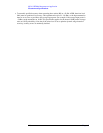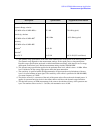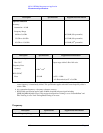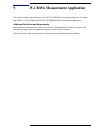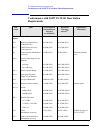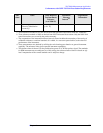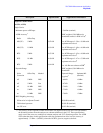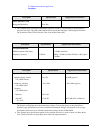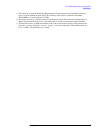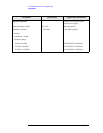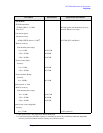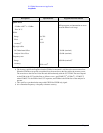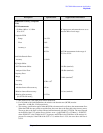
124 Chapter 9
W-CDMA Measurement Application
Amplitude
b. The Fast method has a slight decrease in accuracy in only one case: for BTS measurements at 5 MHz
offset, the accuracy degrades by ±0.01 dB relative to the accuracy shown in this table.
c. To meet this specified accuracy when measuring mobile station (MS) or user equipment (UE) within
3 dB of the required −33 dBc ACPR, the mixer level (ML) must be optimized for accuracy. This opti-
mum mixer level is −22 dBm, so the input attenuation must be set as close as possible to the average
input power − (−22 dBm). For example, if the average input power is −6 dBm, set the attenuation to
16 dB. This specification applies for the normal 3.5 dB peak-to-average ratio of a single code. Note that
if the mixer level is set to optimize dynamic range instead of accuracy, accuracy errors are nominally
doubled.
d. ACPR accuracy at 10 MHz offset is warranted when the input attenuator is set to give an average mixer
level of −14 dBm.
e. In order to meet this specified accuracy, the mixer level must be optimized for accuracy when measur-
ing node B Base Transmission Station (BTS) within 3 dB of the required −45 dBc ACPR. This opti-
mum mixer level is −19 dBm, so the input attenuation must be set as close as possible to the average
input power −(−19 dBm). For example, if the average input power is −5 dBm, set the attenuation to
14 dB. This specification applies for the normal 10 dB peak-to-average ratio (at 0.01% probability) for
Test Model 1. Note that, if the mixer level is set to optimize dynamic range instead of accuracy, accu-
racy errors are nominally doubled.
f. Agilent measures 100% of the signal analyzers for dynamic range in the factory production process.
This measurement requires a near-ideal signal, which is impractical for field and customer use. Because
field verification is impractical, Agilent only gives a typical result. More than 80% of prototype instru-
ments met this “typical” specification; the factory test line limit is set commensurate with an on-going
80% yield to this typical.
The ACPR dynamic range is verified only at 2 GHz, where Agilent has the near-perfect signal avail-
able. The dynamic range is specified for the optimum mixer drive level, which is different in different
instruments and different conditions. The test signal is a 1 DPCH signal.
The ACPR dynamic range is the observed range. This typical specification includes no measurement
uncertainty.
g. 3GPP requires the use of a root-raised-cosine filter in evaluating the ACLR of a device. The accuracy
of the passband shape of the filter is not specified in standards, nor is any method of evaluating that
accuracy. This footnote discusses the performance of the filter in this instrument. The effect of the RRC
filter and the effect of the RBW used in the measurement interact. The analyzer compensates the shape
of the RRC filter to accommodate the RBW filter. The effectiveness of this compensation is summa-
rized in three ways:
− White noise in Adj Ch: The compensated RRC filter nominally has no errors if the adjacent channel
has a spectrum that is flat across its width.
− TOI-induced spectrum: If the spectrum is due to third-order intermodulation, it has a distinctive
shape. The computed errors of the compensated filter are −0.004 dB for the 470 kHz RBW used for UE
testing with the IBW method and also used for all testing with the Fast method, and 0.000 dB for the
30 kHz RBW filter used for BTS testing with the IBW method. The worst error for RBWs between
these extremes is 0.05 dB for a 330 kHz RBW filter.
− rms CW error: This error is a measure of the error in measuring a CW-like spurious component. It is
evaluated by computing the root of the mean of the square of the power error across all frequencies
within the adjacent channel. The computed rms error of the compensated filter is 0.023 dB for the
470 kHz RBW used for UE testing with the IBW method and also used for all testing with the Fast
method, and 0.000 dB for the 30 kHz RBW filter used for BTS testing. The worst error for RBWs
between these extremes is 0.057 dB for a 430 kHz RBW filter.



